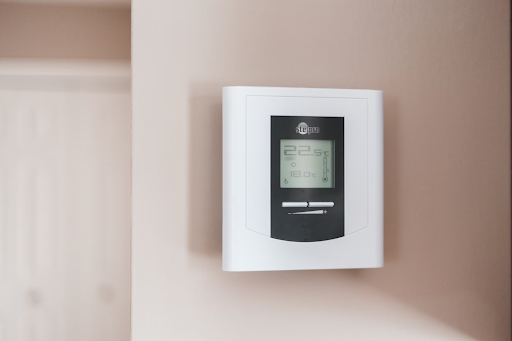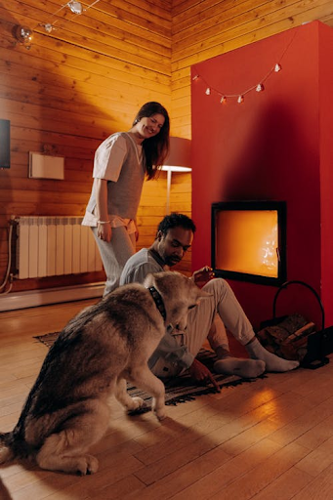As the cold weather sets in, it’s important to ensure your home is ready to withstand the chill. Proper heating is essential not only for comfort but also for maintaining the structural integrity of your home. The last thing you want during the winter months is a breakdown in your heating system, which can lead to costly repairs and uncomfortable living conditions. Luckily, there are several steps you can take to prepare your home for the cold and keep your heating system running efficiently. In this article, we’ll discuss essential heating tips to help you stay warm, save energy, and avoid expensive issues this winter.

Perform a Heating System Check-Up
Before the first major cold snap hits, it's crucial to perform a thorough check-up of your heating system. Whether you have a furnace, heat pump, or central heating system, ensuring that everything is working properly can prevent disruptions during the winter. If you haven’t already, schedule an annual inspection with a professional heating contractor. This check-up will include cleaning, maintenance, and testing of key components, such as the thermostat, filters, and ducts.
Additionally, if you have a gas-powered heating system, ensure that there are no gas leaks, and that the ventilation system is functioning properly. Failing to do so could result in a dangerous situation, including carbon monoxide buildup. Regular maintenance helps prolong the life of your heating system and ensures that it operates at optimal efficiency. If you’re in need of heating services, it’s worth noting that companies like Wilson provide reliable HVAC services. HVAC services can keep your system running smoothly throughout the winter.
Insulate Your Home
Proper insulation is one of the most effective ways to prepare your home for the winter. It prevents heat from escaping and helps maintain a consistent temperature indoors. Start by checking your attic insulation; inadequate attic insulation can lead to significant heat loss. If your home is older, it’s particularly important to assess the insulation levels and add more if necessary.
In addition to the attic, focus on insulating your windows and doors. Drafts can let cold air seep into your home, making your heating system work harder. Installing weather stripping or caulking around windows and doors is a simple and affordable way to seal these gaps. Consider upgrading to energy-efficient windows if your budget allows, as they can provide long-term savings on heating costs. Insulating your home will not only help you stay warmer but will also reduce energy consumption, which can translate to lower utility bills.
Enhance Your Heating System
Upgrading your heating system can improve energy efficiency and overall comfort during the winter. One effective option is installing heated floors, which helps distribute warmth evenly throughout your home. Unlike traditional heating methods, this system keeps floors warm and reduces cold spots, making indoor spaces more comfortable in colder months.
Upgrade Your Thermostat
Upgrading your thermostat to a programmable or smart model can significantly improve the efficiency of your heating system. These thermostats allow you to set different temperatures for various times of the day, helping you conserve energy while still maintaining comfort. For instance, you can set your thermostat to lower the temperature when you’re away from home or sleeping and raise it before you return or wake up.
Smart thermostats take it a step further by learning your routine and automatically adjusting the temperature to suit your preferences. Some models even allow you to control the temperature remotely using a smartphone app. With the ability to optimize your heating schedule, upgrading your thermostat can help reduce energy waste, which not only lowers your heating costs but also extends the lifespan of your heating system.
Seal Ductwork and Vents
Leaky ducts can lead to significant heat loss, causing your heating system to work harder and waste energy. Over time, ducts can develop holes or become disconnected, allowing heated air to escape before it reaches its intended destination. To avoid this, it’s important to inspect your ductwork for any signs of leakage or damage.
If you find any gaps, use duct tape or sealant to patch them up. For added protection, consider insulating your ducts to reduce heat loss as the air travels through the system. In addition, check your vents to ensure they’re not blocked by furniture or other objects. Proper airflow is crucial for an efficient heating system, and ensuring that your ducts and vents are clear of obstructions will help maintain consistent heat distribution throughout your home.
Use Space Heaters Wisely
If you have rooms that aren’t used often or areas that are difficult to heat, using space heaters can be an effective way to boost warmth without relying entirely on your central heating system. Space heaters are especially useful for supplemental heating in smaller rooms or zones where the temperature tends to fluctuate.
However, it’s important to use space heaters safely. Always ensure that the heater is placed on a flat, non-combustible surface, away from flammable materials like curtains or blankets. Turn the heater off when you leave the room, and never leave it running overnight. Space heaters can provide a quick solution to cold spots in your home, but they should not be used as a replacement for your primary heating system.
Reverse Ceiling Fans
Ceiling fans are typically associated with cooling in the summer months, but they can also be beneficial during the winter. Reversing the direction of your ceiling fan blades can help redistribute warm air that rises to the ceiling. In a clockwise direction, the fan will gently push warm air down into the living space, helping to maintain a more consistent temperature throughout the room.
This simple trick can help make your heating system more efficient by ensuring that the warm air stays at the level where you need it most. By utilizing your ceiling fans effectively, you can reduce the load on your central heating system and increase overall comfort.
Check Your Fireplace
If you have a fireplace, it’s important to ensure that it is in good working order before using it during the colder months. Start by inspecting the chimney and flue for any blockages or debris, as these can lead to dangerous situations like chimney fires or poor air quality. Make sure the damper opens and closes properly to regulate airflow.
If you use a wood-burning fireplace, stock up on seasoned firewood and ensure that it’s stored in a dry place. If your fireplace is gas-powered, have a professional check the pilot light and gas lines to ensure that everything is functioning correctly. Using your fireplace efficiently can add extra warmth to your home while reducing the strain on your heating system.

Preparing your home for the cold weather doesn’t have to be a complicated or costly process. By following these heating tips, you can ensure that your home stays warm and comfortable throughout the winter, all while conserving energy and saving on utility bills. Start by performing a heating system check-up, insulating your home, and upgrading your thermostat. Don’t forget to seal ducts and vents, use space heaters wisely, and reverse ceiling fans to optimize heat distribution. Finally, check your fireplace and consider upgrading to a high-efficiency system if necessary. With these steps, you’ll be ready to face the cold and enjoy a cozy, energy-efficient winter.
Related Articles:
- Expert tips to save you money heating your home
- Top Tips for Saving Money on Your Heating Bill This Winter





(0) comments
We welcome your comments
Log In
Post a comment as Guest
Keep it Clean. Please avoid obscene, vulgar, lewd, racist or sexually-oriented language.
PLEASE TURN OFF YOUR CAPS LOCK.
Don't Threaten. Threats of harming another person will not be tolerated.
Be Truthful. Don't knowingly lie about anyone or anything.
Be Nice. No racism, sexism or any sort of -ism that is degrading to another person.
Be Proactive. Use the 'Report' link on each comment to let us know of abusive posts.
Share with Us. We'd love to hear eyewitness accounts, the history behind an article.